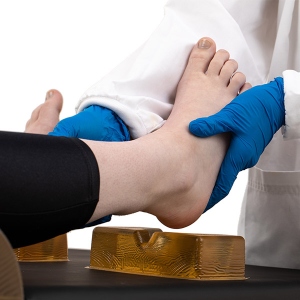An ambulatory surgical center (ASC) is a healthcare facility that focuses on providing same-day surgical care that includes diagnostic and preventative surgery. When looking at the ASC, it has transformed the outpatient surgical experience for millions of Americans by providing a more convenient surgical alternative. As much as 65% of all surgical cases performed take place in the outpatient ASC setting.
Read MorePressure Injuries in Ambulatory Surgical Centers
Monday, April 1, 2024 2:48:09 PM America/New_York
Ask the Expert Your Patient Positioning Questions at AORN 2024!
Monday, February 5, 2024 1:14:42 PM America/New_York
Ask the Expert at AORN 2024!

Dr. Heather D. Kooiker, DNP, MSN, RN, CNL, CNOR, CRNFA, is a Board-Certified Clinical Nurse Leader (CNL) who also holds Certifications in Perioperative Registered Nursing (CNOR), along with a Registered Nurse First Assistant Certification (CRNFA). Heather serves Baxter International as the Director of Global Medical Affairs for Patient Support Systems and Global Surgical Solutions. She is also a Professor of Nursing at Davenport University where she integrates Evidence Based Practice (EBP) and Research into the classroom, preparing the next generation of nurses. Heather maintains her clinical edge by working as a Registered Nurse First Assistant (RNFA) for an ambulatory plastic surgery center PRN. She is an active board member on the Western Michigan Chapter of AORN, she also sits on the executive board for the National Surgical Assisting Certification and is a peer reviewer for the CRNFA portfolio certification.
Visit booth #1230 to experience, firsthand, Action® patient positioning solutions. We know it is difficult to choose the right positioning devices for your patients through catalog browsing alone so we will have a variety of positioning devices available for real-time assessment.
Read MoreSafe Supine Positioning
Thursday, April 6, 2023 2:21:45 PM America/New_York

One of the highly common surgical positions is supine. This approach involves the surgical team’s watchful eyes to oversee a patient that will lie on their back with their arms either tucked or untucked to provide direct anatomical and surgical exposure to any area from the head and neck to the anterior aspects of the lower legs and feet. Supine position may be requested for a myriad of surgical procedures including everything from a thyroid, chest, cardiac, general, urology, orthopedic, or podiatry procedure to name a few. Given the wealth of clinical indications for the supine position, intentional time must be afforded for the perioperative team to consider all areas of required surgical access, as well as the areas not exposed during the surgical intervention.
Read MoreGel Overlays: A Head-to-Toe Tool in the Prevention of Perioperative Pressure Injuries
Thursday, February 16, 2023 12:50:12 PM America/New_York

By: Amos Schonrock, MAN, RN, ST, PHN, CSSM, CNAMB, CNOR, NE-BC, Perioperative Patient Safety Specialist
As perioperative professionals, the operating room team has a constant dedication and calling to the creation and maintenance of an environment that keeps our patient free from harm. As a vigilant guardian, the perioperative nurse is often at the forefront of this action. For positioning the perioperative patient, the nurse must use their senses to assess the patient’s well-being and current integumentary status as part of the pressure injury prevention assessment during all phases of care.
Read MoreMedical Device Pressure Injuries: Protect your Patients in Extreme Surgical Positions
Friday, August 19, 2022 12:19:25 PM America/New_York
Some surgical procedures require extreme positioning to ensure that the targeted surgical area is accessible to the surgeon and the surgical team. Extreme positioning requires extreme positioning devices which are manufactured to meet the need for surgical access first and foremost. Unfortunately, the devices and positions needed for optimal surgical access can increase the risk for an interoperative medical device related pressure injury. The resultant pressure injury generally mirrors the pattern or shape of the device. One common position that fits the extreme high-risk description is the Lateral Decubitus Position. This position is commonly used during surgery requiring access to the thorax, retroperitoneum, or hip with a patient lying on the nonoperative side and careful positioning of the extremities. The following are some best practices to help when positioning the patient in a lateral position.
Read More